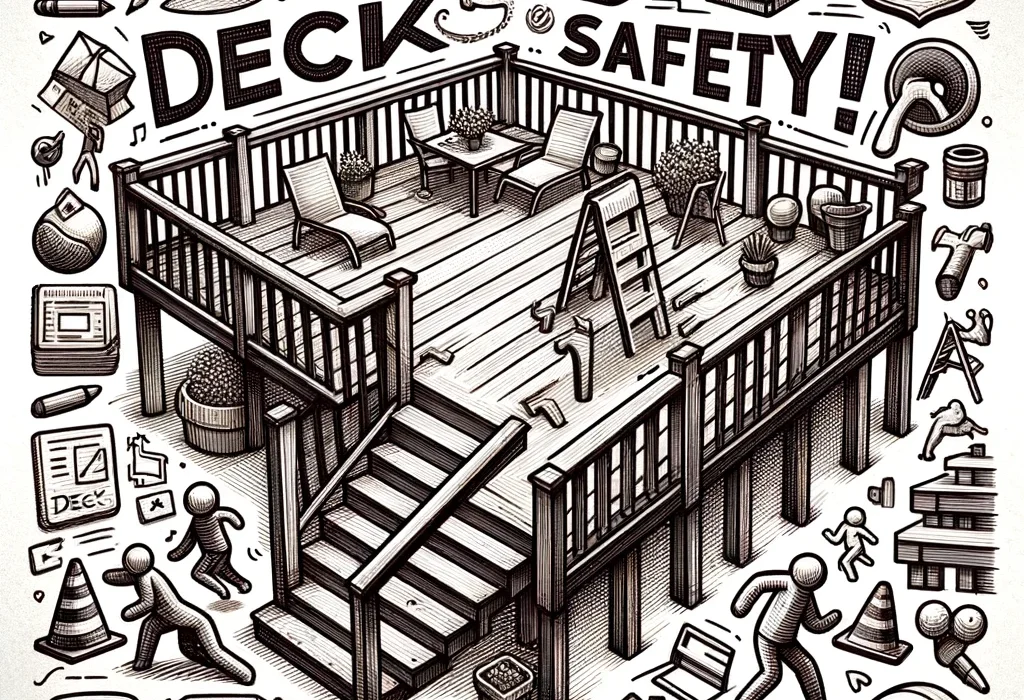Navigating Austin’s Building Codes for Decks
In-Depth Code Analysis
Austin’s building codes for decks are comprehensive, focusing on ensuring structural integrity and safety. Key aspects include load-bearing capacities, which dictate how much weight your deck can safely support, and material durability standards. For instance, pressure-treated wood or equivalent materials are often required to withstand Austin’s climate while maintaining structural integrity.
Code Updates
Building codes evolve, and staying abreast of these changes is crucial for homeowners. Regularly consulting Austin’s official building code resources or working with knowledgeable local contractors can ensure your deck remains compliant with the latest standards.
The Permitting Process Explained
Step-by-Step Permit Guide
Obtaining a permit for deck construction in Austin involves several steps. Start by submitting your deck design plans to the local building authority for approval. These plans should detail deck dimensions, materials, and safety standards. After submission, an inspection may be required to ensure the plan meets all regulations.
Avoiding Legal Pitfalls
Non-compliance with permitting processes can lead to significant legal issues, from fines to mandatory removal of non-compliant structures. It’s also a major concern when selling your property, as potential buyers will want assurance that all structures are legally compliant.
Deck Safety Features and Design
Advanced Railing and Barrier Design
In Austin, deck railings must be at least 36 inches high, with balusters spaced no more than 4 inches apart. Going beyond the basics, consider railings made of tempered glass for unobstructed views or composite materials for longevity.
Innovative Stair Designs
Safe stair design is critical. Austin’s code typically requires stairs to be at least 36 inches in width, with treads and risers of specific dimensions for safe ascent and descent. Lighting within or along stairs can enhance safety and aesthetics.
Regular Inspections and Preventive Maintenance
Comprehensive Check-up List
A thorough inspection should include checking for loose boards, railings, and balusters; examining support posts and beams for rot or insect damage; ensuring stairs are secure; and verifying that all fasteners and anchors remain tight and intact.
Long-Term Maintenance Strategies
Routine maintenance, such as cleaning, checking for and repairing damage, and resealing wood surfaces, is vital for deck longevity. Immediate attention to minor issues like small cracks or loose fittings can prevent more significant problems later.
Hiring Deck Safety Experts
Criteria for Selecting Contractors
When choosing a contractor in Austin, look for licensed professionals with experience in local deck building codes. Check for references or examples of their previous work, ensuring they have a track record of safety and compliance.
The Role of Professional Assessments
Professional assessments are especially critical for older decks or following severe weather. A qualified inspector can provide a detailed analysis of your deck’s safety and suggest necessary repairs or upgrades.
Navigating Austin’s Building Codes for Decks
Impact of Climate on Material Selection
Austin’s hot and sometimes humid climate can significantly impact deck materials’ longevity and safety. It’s essential to choose materials that are not only compliant with building codes but also suited to withstand local weather conditions. For instance, materials resistant to heat-induced expansion and contraction, as well as moisture-resistant, are ideal.
The Permitting Process Explained
Navigating Historic and Conservation Districts
Austin’s historical or conservation districts may have additional regulations. If your property falls within such a district, you might need specific aesthetic guidelines or additional approval processes. This is to ensure your deck aligns with the area’s character.
Deck Safety Features and Design
Non-Slip Surfaces
Given Austin’s occasional rainy weather, non-slip surfaces can prevent accidents. Materials with textured surfaces or coatings that provide extra grip can be particularly beneficial.
Regular Inspections and Preventive Maintenance
Dealing with Austin’s Unique Flora and Fauna
Local flora and fauna can affect deck safety. For instance, vines or roots can compromise structural elements. Regular inspections should include checking for natural growth that might impact deck stability.
Hiring Deck Safety Experts
Understanding Local Expertise
When selecting professionals for deck construction or inspection, consider their understanding of Austin’s specific environmental and regulatory context. Local experts will be more familiar with the challenges and requirements unique to the area. This includes soil types that affect foundation stability and local flora that impact long-term maintenance.
Additional Considerations
Emergency Access and Egress
Ensure that your deck design does not impede emergency access and egress. This is especially relevant for decks with enclosed areas or those attached to the upper levels of the home.
Child and Pet Safety
If children or pets are part of your household, consider additional safety features like higher railings, closer baluster spacing, and gates on staircases to prevent accidents.
Conclusion: Beyond Compliance – Safety as a Lifestyle
Adhering to deck safety standards and regulations in Austin is about more than just compliance; it’s about ensuring a safe, enjoyable outdoor lifestyle. By looking beyond the minimum requirements and considering factors like local climate, emergency preparedness, and the needs of all family members, you can create a deck that is not only safe and compliant but also a perfect fit for your lifestyle.


13 Comments
Comments are closed.